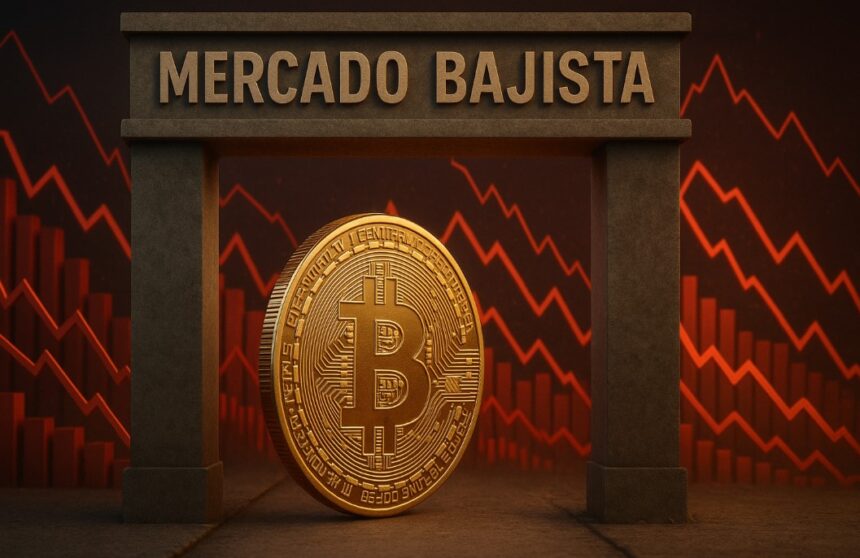Bitcoin (BTC) is facing the most notable phase that signals the end of the current cycle, with a visible increase in loss selling among short-term investors.
According to on-chain analysts, such a move could signal a significant turnaround in the market, or in the worst-case scenario, a bear market or “crypto winter” if certain levels do not recover.
In this context, while the price of Bitcoin is trading below $90,000, the cost basis for short-term holders is Approximately $109,000.
This ever-widening gap reflects a large group of participants selling their BTC below the price at which they acquired it.
Short-term Bitcoin holders panic and sell
An on-chain Bitcoin analyst known as IT Tech has warned that short-term investors (STH) are “capitulating.”
His latest research explains that graphs of realized gains and losses for this group (defined as people who have held their coins for less than 155 days) show dark red bars. this is Clear signs of sale with associated losses.
Experts say dark red bars confirm a “heavy sell with significant losses.” It also warned of “peaks in realized losses comparable to the large corrections in 2021 and mid-2024.”
The important point he emphasizes is that Bitcoin’s current price is below its cost basis for short-term holders. It is located at $109,200 and is marked by a blue dotted line on the chart.
Analysts’ conclusions are categorical. “STH has been panic selling, indicating a possible capitulation.”
This type of event typically marks a bottom in the region when price quickly recovers its cost base. However, he cautioned that “historically not doing so would indicate a more severe bearish trend or confirm a Bitcoin bear market.”
Technical signals are consistent with a surrender scenario
The behavior of the Short-Term Holders SOPR (STH-SOPR) indicator, which measures whether short-term Bitcoin holders sell at a profit or loss, reinforces the idea that: Market faces systematic loss selling And we’re driving out fearful retailers.
This index decreased to 0.97. A value less than 1 represents a sale for less than the purchase price.
The latest graph of this indicator shows that despite the decline in BTC price, the indicator continues to be compressed without showing any signs of recovery.
The combination of these factors (increasing realized losses, forced sales, and continued negative STH-SOPR) paints the following scenario. Short-term holders are under considerable pressure.. This pushes the sector towards a Bitcoin bear market.
Is it enough for a Bitcoin bear market?
Bitcoin has retreated from its all-time high of over $126,000 hit just over a month ago and is now below $90,000.
While the magnitude of the decline could signal the beginning of a long bearish cycle, multiple analysts agree that the typical conditions for a crypto winter have not yet been met.
Spanish researcher Carmelo Aleman believes this correction is an “artificial fall, a forced fall.” According to a report by CriptoNoticias, long-term holders (those who have held the coin for more than 155 days) saw a 2.81% increase in sales last month, but analysts assert that this amount is not enough to cause a significant collapse in the price.
Aleman claims there are many long-term investors They decided to take profits after several months of accumulation.. In his opinion, fatigue is more of a motivator than structural changes in the market.
“I think they’re selling because they’re tired and I think they’re already making a profit,” he explains. However, he argues that this action does not correspond to the typical high-volume distribution pattern that typically predicts an extended Bitcoin bear market.
This analysis is consistent with Glassnode research, which shows Bitcoin is in a “potential zone for demand revitalization,” especially if indicators such as large investor agglomeration remain high.
For CryptoQuant analysts, known as MAC.D, the signal that officially triggers a prolonged bear market period would be a sustained decline in price below $78,500. This threshold corresponds to the average acquisition cost of large holders. People who have maintained their tendency to accumulate.
What should happen now?
For now, the key remains the cost basis for short-term holders. As long as Bitcoin remains below $106,000 to $109,000. Selling pressure may continue.
In the case of IT technology, the market will only be able to avoid further downward trends if prices “soon recoup” the cost base of this group.
Failure to do so would not necessarily result in a crypto winter, but history suggests the beginning of a longer bear phase, unless prices break through the critical $78,500 level identified by MAC.D.
For now, the capitulation of short-term investors will set the tone for the market. The next few weeks will be decisive in determining whether the current movement signals a regional bottom. Or a harbinger of a more serious downtrend.
(Tag translation) Bitcoin (BTC)


